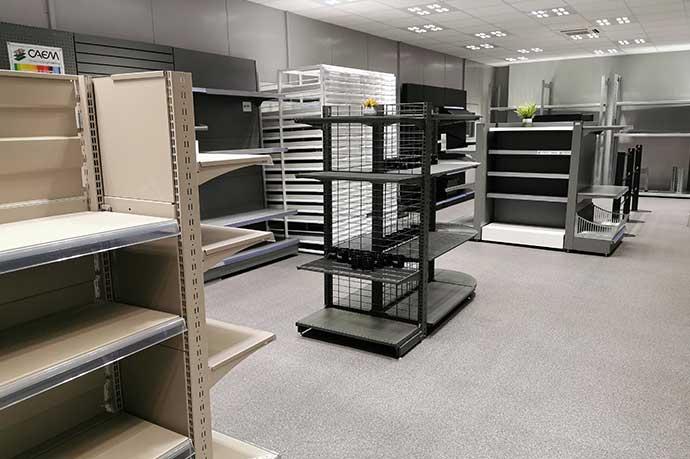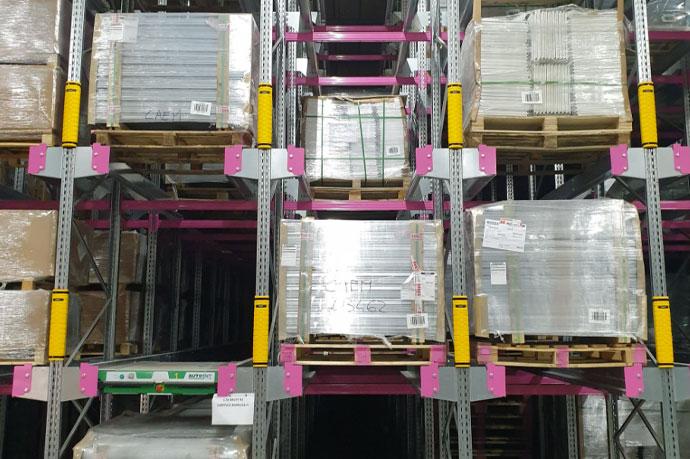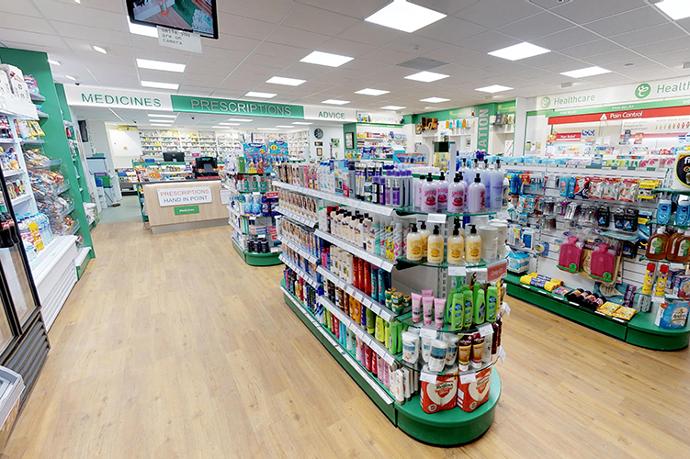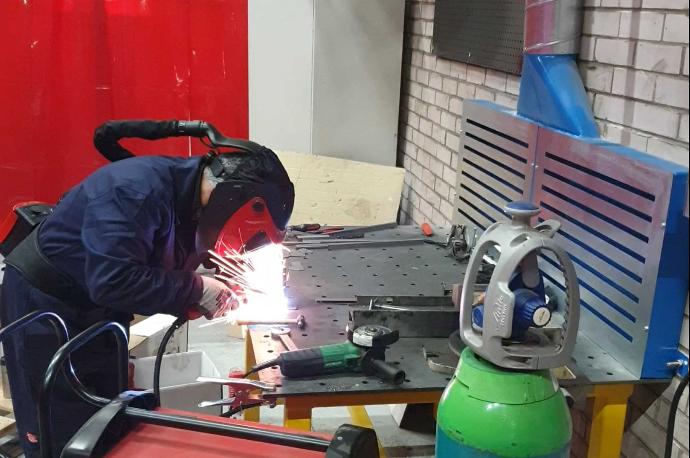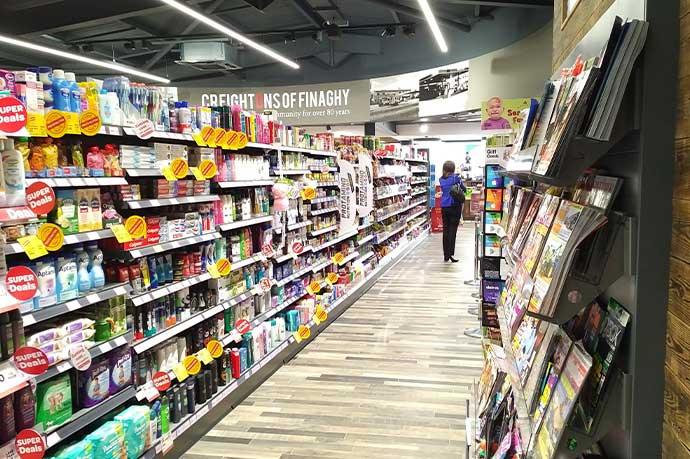Boost Sales Now – How Brick and Mortar Retailers Can Win
Success in brick-and-mortar retail has never demanded more adaptability or insight. While the rise of e-commerce continues to reshape the landscape, physical stores remain the backbone of the retail sector. The question isn't whether brick-and-mortar retailers can increase sales—it's how they can do it smarter, faster, and with lasting impact.
Understanding Modern Challenges for Brick-and-Mortar Retailers
1. The Rise of E-commerce: Opportunities and Threats
E-commerce has seen explosive growth, with US retail e-commerce sales reaching $1.192 trillion in 2024—a staggering 301% increase since 2014. Yet despite this digital surge, physical stores still account for 83.7% of US retail sales. This dominance is set to continue, with brick-and-mortar sales growing 3.5% in 2024 to reach $21.8 trillion globally, and projected to increase another 4.13% to $22.7 trillion in 2025.
The real shift lies in how consumers now expect seamless transitions between online and in-store experiences. Physical stores create what's known as a "halo effect"—opening a physical store resulted in approximately a 6.9% increase in online sales for retailers overall, with emerging retailers seeing an even more dramatic 14% boost. Digital presence, unified inventory, and omnichannel touchpoints allow retailers to reach customers beyond their four walls, while in-store experiences provide the tactile, immediate gratification online shopping can't replicate.
2. Shifts in Consumer Behaviour and Expectations
The modern shopper is informed, demanding, and values flexibility. Research shows that 74% of shoppers research store-related information online before visiting physical locations, while 50% of US shoppers prefer to physically try products before making an in-store purchase. This hybrid shopping behaviour has become the norm, with consumers expecting both autonomy and expertise during their visit.
Personalisation now drives loyalty. 71% of customers expect personalised experiences, and 76% feel frustrated when these expectations aren't met. The stakes are high: over 50% of customers will switch brands after a single poor experience. As Jen Seran, Director of Business Operations at Stallion Express, notes: "AI-driven personalization will take shopping experiences to the next level. We have seen a 25% boost in customer satisfaction when incorporating AI-powered personalization into our services."
3. Importance of Digital Integration in Physical Stores
Digital integration isn't optional—it's essential. The numbers back this up: between 30-60% of retail buyers reported that AI-enabled tools improved demand forecasting and inventory management in 2024, while seven in ten retail executives expect to have AI capabilities in place within 2025 to help personalise customer experiences.
Doug Herrington, CEO of Worldwide Amazon Stores, emphasises the transformative potential: "AI is becoming transformative for our business, and we really haven't had a technology revolution as large as this since the start of the internet." Interactive signage, unified POS systems, and real-time inventory management bridge the gap between online convenience and in-store immediacy, while gathering valuable data for smarter marketing and service.
Strategies to Increase In-store Sales
1. Optimising Store Layout for Better Engagement
Store design has a measurable impact on sales. Strategic impulse displays, such as those highlighted in CAEM's retail display solutions, placed near checkouts, encourage spontaneous purchases—especially when stocked with low-cost or complementary items. Category management and cross-merchandising, such as grouping pasta with sauces, create natural purchase associations and increase basket size.
CAEM's M25 shelving system exemplifies layout optimisation. Its ultra-low base, slim shelves, and central back panels allow for precise shelf placement and maximise display space, improving customer flow and boosting sales potential. Additions like Ardente LED shelf lighting further enhance product visibility and store ambience, making the environment both appealing and effective.
Quick Implementation Tips:
- Position high-margin impulse items at eye level near checkout areas
- Use lighting to highlight premium products and create ambience
- Ensure clear sightlines throughout the store to improve navigation
- Group complementary products together to increase basket size
2. Leveraging Data to Anticipate Customer Needs
Data-driven decision-making is the engine behind modern retail success. Current research shows that 70% of retail leaders now rely on data analytics to guide purchasing decisions, reflecting the growing importance of data in retail strategy and operations.
By tracking foot traffic and analysing purchasing patterns, retailers can optimise layouts, staffing, and product placement based on actual behaviour. Loyalty programmes and CRM systems reveal valuable insights for tailored promotions and proactive service. Integrating online and offline data sources creates a holistic view, enabling truly personalised marketing strategies and accurate forecasting.
Azita Martin, vice president and general manager of retail and CPG at Nvidia, highlights a key area of opportunity: "Supply chain, more than anywhere in retail in my opinion, is going to benefit the most from AI." This insight underscores how backend operations can transform to directly impact physical stores.
3. Personalised Customer Experiences: Making Each Visit Special
Personalisation is a proven driver of sales and loyalty. Companies with advanced personalisation strategies enjoy returns of $20 for every $1 spent, while 70% of retailers investing in personalisation report an ROI of at least 400%. Empowering staff with customer insights enables bespoke recommendations, turning each visit into a memorable experience.
Whether through targeted offers, attentive service, or tailored in-store experiences, personalisation makes customers feel valued and more likely to return. The key is using technology to enhance human connection rather than replace it.
4. Investing in Employee Training for Enhanced Service
Well-trained staff set brick-and-mortar retail apart from online-only competitors. Training that covers product knowledge and soft skills enables employees to create genuine connections, resolve issues swiftly, and deliver expert advice. Empowered, engaged employees are not only more effective—they foster loyalty and encourage repeat visits.
Elisabeth Emory, founder of Blacklion Home Decor in Chicago, demonstrates how technology can free up staff for higher-value interactions: "I wanted to be able to bring the same scale of brands and product offerings in different categories as the store in Charlotte, but we would have to have multiple full-time people managing this many SKUs if we were doing it manually." This shows how the right systems enable staff to focus on customer experience rather than administrative tasks.
Utilising Technology to Enhance Retail Experience
1. Implementing Augmented Reality and Virtual Reality
AR and VR technologies are reshaping in-store engagement. The global AR & VR market is projected to reach $46.6 billion in 2025, with AR in retail alone expected to be worth $12 billion. These tools allow customers to visualise products in their own environments, boosting purchase confidence—AR integration can increase purchase intention by 17% and 61% of consumers prefer shopping with retailers offering advanced AR experiences.
Yet many retailers have yet to move beyond pilot projects, missing out on the full benefits of immersive technology. IKEA's use of AR, for instance, enables customers to virtually place furniture in their homes, enhancing confidence and driving higher in-store engagement.
2. Mobile Payment Solutions for Seamless Transactions
Contactless and mobile payments are now expected. Target's success with mobile payment integration demonstrates the impact: during their Q3 2024 performance, the company achieved a 10.8% increase in digital sales while total revenue reached $25.7 billion, representing a 1.1% increase over the previous year.
Integrating payments with loyalty schemes and digital receipts adds further value, reinforcing a modern, frictionless experience. Target's focus on same-day delivery services saw more than 30% growth during the 2024 holiday season, proving the power of integrated convenience.
3. Online-to-Offline Strategies: Integration and Coordination
Blending online and offline operations is crucial. Services like click-and-collect, ship-from-store, and in-store returns offer customers flexibility and convenience. Target's comprehensive approach resulted in digital comparable sales rising 7.5% for the full year 2024, while overall customer traffic increased by 1.4% across both digital and physical store channels.
The retailer's omnichannel strategy includes AI-powered personalisation and enhanced fulfillment efficiency, showing how coordinated digital-physical strategies can drive measurable results.
4. Omni-channel Strategy: Creating a Unified Customer Experience
An effective omni-channel strategy delivers seamless brand experiences across all platforms. Retailers with robust omni-channel integration retain approximately 89% of customers, compared to just 33% for those without. Features like online inventory visibility, click-and-collect, and in-store digital experiences not only improve retention but also drive sales.
Consistency, reliability, and personalisation across channels are now non-negotiable. Target's success extends beyond sales metrics—their Roundel advertising business generated $649 million in revenue, up approximately 25% from 2023, showing how integrated strategies can create multiple revenue streams.
Innovative Marketing Techniques to Boost Foot Traffic
1. Proximity Marketing and Geo-targeting
Location-based marketing is a powerful tool for attracting nearby customers. Geo-fencing and proximity targeting deliver timely, relevant offers, encouraging impulse visits and boosting local engagement. Integrating these campaigns with loyalty programmes and events maximises their effectiveness, driving both new and repeat visits.
The key is timing and relevance—sending offers when customers are nearby and likely to act increases conversion rates while building positive brand associations.
2. Hosting In-store Events and Workshops
Events transform shopping into an experience. Demonstrations, classes, and community gatherings foster deeper engagement and generate buzz. Influencer-led events, in particular, have proven highly effective at drawing crowds and creating lasting brand impressions. These experiences not only drive sales on the day but build long-term loyalty.
Event Planning Essentials:
- Schedule events during off-peak hours to maximise impact
- Partner with local influencers or experts for credibility
- Offer exclusive products or discounts to event attendees
- Use social media to amplify event reach and engagement
3. Building a Loyal Community through Social Media Engagement
A strong social media presence keeps customers informed, engaged, and invested in your brand. Sharing behind-the-scenes content, exclusive promotions, and customer stories nurtures a sense of belonging and encourages in-store visits. Social platforms also enable two-way communication, supporting feedback and relationship-building.
The focus should be on authentic engagement rather than promotional posts—customers respond to genuine interactions and community-building efforts.
4. Creating Enticing Click-and-Collect Offers
Click-and-collect services merge online convenience with in-store immediacy. Offering special incentives for in-store pickup—like exclusive discounts or bundled deals—drives foot traffic and encourages impulse purchases. Well-designed pickup areas, complemented by strategic merchandising, turn every collection into a sales opportunity.
Target's strategic approach shows measurable results: their emphasis on same-day services including curbside pickup has contributed to sustained growth in customer traffic and digital integration success.
Learning from Successful Brick-and-Mortar Retailers
1. Case Study: Target's Digital Integration Success
Target demonstrates how traditional retailers can effectively blend online and offline experiences to drive growth. Their comprehensive digital transformation achieved impressive results across 2024, with digital sales growing 9% during the holiday season compared to the previous year.
The retailer's strategy included enhanced fulfillment efficiency, strategic price adjustments, and loyalty program expansion. Target added 3 million new members to its Target Circle program, creating more opportunities for personalized marketing. Their focus on AI-powered personalization and same-day delivery services shows how technology investment translates to measurable business outcomes.
2. Case Study: Driving Sales Through AI-Powered Experiences
Experience-driven retail is a proven differentiator. Leading retailers implementing interactive digital signage and AI-powered displays provide personalised suggestions and time-sensitive deals, resulting in measurable increases in engagement and sales per visit.
These successes highlight the value of making every visit memorable through technology that enhances rather than replaces human interaction. The key is creating systems that empower staff to deliver better service while providing customers with relevant, timely information.
3. Lessons Learned: Strategies to Adopt and Avoid
The most successful brick-and-mortar retailers prioritise a customer-first mindset, invest in technology, and recognise the value of ongoing staff training. They adapt quickly, stay attuned to trends, and avoid complacency. With retail executives expecting mid-single digit growth in 2025, supported by projected US economic growth of 2.4%, the foundation for success is strong for those willing to invest in the right strategies.
Quick Implementation Checklist for Immediate Action
Ready to boost your brick-and-mortar sales? Start with these seven essential actions:
- Audit your current customer data collection - Implement basic analytics to track foot traffic patterns and purchase behaviour within 30 days
- Optimise your checkout area - Add impulse purchase displays and ensure mobile payment options are prominently featured
- Train staff on personalisation basics - Equip employees with customer insight tools and product knowledge to deliver tailored recommendations
- Introduce click-and-collect services - Set up a dedicated pickup area with exclusive offers for online-to-offline customers
- Leverage social media for local engagement - Post behind-the-scenes content and community stories to build authentic connections
- Plan your first in-store event - Schedule a product demonstration or workshop within 60 days to create buzz and drive traffic
- Review your omnichannel touchpoints - Ensure consistent pricing, inventory visibility, and customer service across all channels
Enhancing Retail Sales with CAEM Systems
At CAEM, we understand the challenges and opportunities facing today's brick-and-mortar retailers. Our expertise in customisable retail display design and advanced shelving systems—such as the M25, S50, TN9, and D25 modular drawers—helps retailers optimise space, enhance product visibility, and improve the overall customer experience. Technical innovations like Ardente LED shelf lighting and integrated racking solutions maximise merchandising potential, while our commitment to sustainability and bespoke shopfitting ensures adaptability for any retail format.
Our work with major retailers—from Boots and Sainsbury's to independent pharmacies and specialty stores—demonstrates the tangible benefits of strategic layout, expert collaboration, and innovative display solutions. Whether you're looking to increase sales, streamline operations, or create a more engaging environment, CAEM's retail shelving and display expertise provides a proven foundation for success.
Winning in today's market isn't about choosing between physical and digital—it's about harnessing the strengths of both. By focusing on customer experience, embracing technology, and continually refining your approach, brick-and-mortar retailers can not only increase sales but secure their place at the heart of retail's future.
